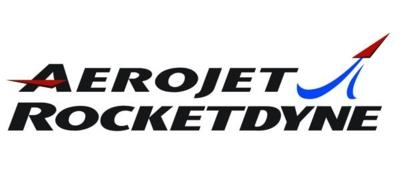Mon, Dec 08, 2014
Large TelComm Satellite Placed Into Orbit
Aerojet Rocketdyne has completed its 100th geosynchronous satellite apogee insertion using its iridium/rhenium High Performance Apogee Thruster (HiPAT), including first and second generation design configurations. The successful insertion was achieved with a large geosynchronous telecommunications satellite, built by commercial satellite manufacturer, SSL, which was recently launched. The milestone will be commemorated by a ceremony at the company's Redmond, Washington facility, with SSL officials in attendance.

The R-4D-15 HiPAT(TM) performs orbit-raising maneuvers for many of the world's communication satellite platforms. Variants of the R-4D have played critical roles in NASA missions such as Cassini's exploration of Saturn and its moons; as well as the European Space Agency and the Japan Aerospace Exploration Agency International Space Station re-supply vehicles.
"The model R-4D-15 HiPAT(TM) is the highest-performing rocket engine in its class," said Warren Yasuhara, vice president of Space Systems at Aerojet Rocketdyne. "By offering a higher specific impulse than
comparable engines, the HiPAT(TM) reduces the total amount of fuel required for the mission and allows spacecraft operators to trade propellant mass for high-value payload."
The R-4D product line includes a series of liquid bipropellant engines that use the propellant combination of nitrogen tetroxide (MON-3) oxidizer and monomethylhydrazine (MMH) fuel. These propellants are storable at room temperature and do not require a separate ignition source, simplifying many higher-level integration issues while still providing high performance.
The R-4D was originally developed as a thruster for the reaction control systems for the Apollo Service Module and the Lunar Excursion Module. The HiPAT is the fifth generation of the R-4D 100 lbf thrust class of liquid bipropellant engines and the second generation of high performance iridium/rhenium engines. "This engine has incredible lineage," said Steve Harper, Bipropellant Propulsion Product Line manager at Aerojet Rocketdyne. "Dating back to Apollo, Aerojet-Rocketdyne's R-4D family of 100 lbf bipropellant engines holds an impressive record of 100 percent mission success throughout five decades of service in space."
More News
A Puff Of Smoke Came Out From The Top Of The Engine Cowling Followed By A Total Loss Of Engine Power On May 9, 2025, about 1020 mountain daylight time, an experimental amateur-buil>[...]
From 2022 (YouTube Edition): Jenny, I’ve Got Your Number... Among the magnificent antique aircraft on display at EAA’s AirVenture 2022 was a 1918 Curtiss Jenny painstak>[...]
Very High Frequency (VHF) The frequency band between 30 and 300 MHz. Portions of this band, 108 to 118 MHz, are used for certain NAVAIDs; 118 to 136 MHz are used for civil air/grou>[...]
“From approximately November 2021 through January 2022, Britton-Harr, acting on behalf of AeroVanti, entered into lease-purchase agreements for five Piaggio-manufactured airc>[...]
From 2008 (YouTube Edition): US Fish and Wildlife Service Chooses The Kodiak To Monitor Waterfowl Populations Waterfowl all over North America may soon have to get used to a new ab>[...]
 NTSB Prelim: Lee Aviation LLC JA30 SuperStol
NTSB Prelim: Lee Aviation LLC JA30 SuperStol Classic Aero-TV: Curtiss Jenny Build Wows AirVenture Crowds
Classic Aero-TV: Curtiss Jenny Build Wows AirVenture Crowds ANN's Daily Aero-Term (05.30.25): Very High Frequency (VHF)
ANN's Daily Aero-Term (05.30.25): Very High Frequency (VHF) Aero-News: Quote of the Day (05.30.25)
Aero-News: Quote of the Day (05.30.25) Classic Aero-TV: Quest Kodiak Enhances Migration Monitoring Programs
Classic Aero-TV: Quest Kodiak Enhances Migration Monitoring Programs



